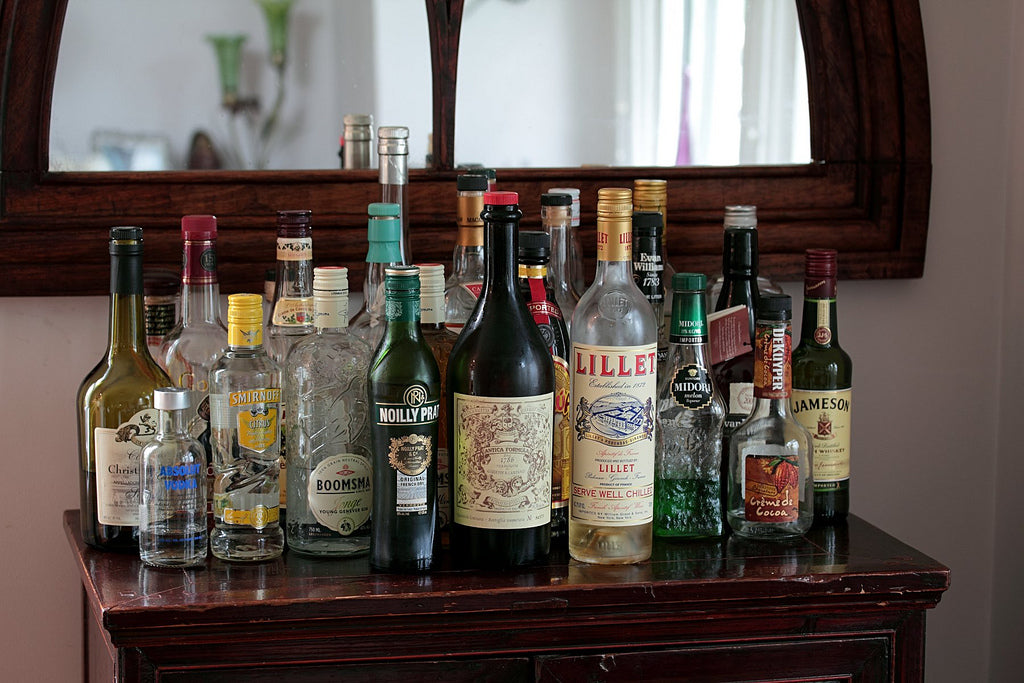Continental Cocktail: Europe’s Top Weird and Wonderful Spirits

For most gourmands, whether food or drink be your vice of choice, a definite highlight of travelling is discovering the wonderfully foreign delights on offer in each country you visit.
Who hasn’t visited France determined to sample snails, frog’s legs and foie gras? Or haggis, black pudding and fried mars bars in Scotland? Although, granted, there are certain delicacies I imagine only the most adventurous of us would voluntarily try; German griebenschmalz, essentially spreadable pig fat, is one such example that quickly springs to mind.
When it comes to drinks, I personally love Italy for the fantastic, and seamlessly never ending, array of unusual wines, spirits, liqueurs, bitters and even non alcoholic beverages on offer. Long before it was fashionable to drink in London and New York, I remember a summer spent indulging in glass after glass of bright orange Aperol Spritz in Piemonte. That rates up there with my recent joy at discovering Crodino, Sanbitter and Venezzio Bitter, wonderfully adult non alcoholic aperitifs which make a refreshing change to the stock standard soft drink staples to choose from when pregnant.
Yet Italy doesn’t have the monopoly on the world’s weird and wonderful drinks, although it does offer some interesting contenders. So whether you find yourself in Europe this summer or next, here are a few of my favourites to search out for and bring back to brighten up your liqueur cabinet:
CYNAR

After that introduction it’s only fitting to start with Italy, and Cynar has always been the name which has piqued my interest the most. Who wants a drink made from predominantly artichokes? Turns out this bitter liqueur is actually to quite a few people’s tastes and is especially popular in Switzerland and Germany where it is often mixed with ... orange juice. If that doesn’t sound appealing, try taking it neat, or mixed with soda water, cola or bitter lemon.
LICOR 43

Made from a whopping 43 ingredients, hence the name, Licor 43 is a Spanish staple that claims a history dating back to Roman times. The exact recipe is a heavily guarded secret known to a select few, but all the ingredients come from the herb and citrus families and produce a rather bright yellow liquid with flavours of vanilla, honey and orange. So, how do you drink it? On the rocks or be inventive and add it to your favourite cocktails, such as a Cuba Libre or Margarita.
THE KING’S GINGER

At the turn of the 20th century, King Edward VII commissioned legendary British wine merchants Berry Brothers and Rudd to create a drink that would revive him during his morning rides. The King’s Ginger was the result! Made from numerous varieties of ginger, this rich and spicy liqueur is still as relevant today as it was more than 100 years ago, and can be enjoyed alone, in cocktails or added to your mulled wine when the nights start getting cold.
KILCHOMAN BRAMBLE LIQUEUR

Whilst we’re in the British Isles, let’s head north to the Scottish Isles, Islay in particular; where the whisky distillery Kilchoman has their own take on your traditional black fruit liqueurs. Brambles are a very British word for a wild blackberry bush and here they are macerated in whisky, honey and the distilleries own new spirit. The end result is unique; the fruity flavours mixed in with distinctly smoky aromas. It’s a liqueur bound to please any whisky fan.
LILLET

An unusual blend of wine and liqueur, Lillet comes in three colours (white, red and rosé), and is aged like a fine Bordeaux wine! You may have already enjoyed this French “tonic wine”, the drinks category that it falls into, as it’s a key ingredient in cocktails such as the Vesper, made famous by 007. Whilst the grapes may be familiar (either Sémillon or Merlot), the liqueur comes from Spanish and Moroccan sweet oranges, Haitian green oranges and a quinine liqueur made from a particular Peruvian plant bark. No surprise then that it’s best served on ice or mixed with tonic water and garnished with a slice of cucumber and mint.
If you find any of these continental cocktail gems on your travels, they can be easily and securely transported back to your home drinks cabinet in our Wine Check Luggage or the WineCradle … they are not just made for wine, remember!
Image Credits: Rob Ireton, Guilherme Dutra Correia, Jonny Hughes, M Prince Photography, AleGranholm, David Vo
Chrissie McClatchie is an Australian freelance writer and wine specialist who has been living in France since 2008. You can follow her on Twitter @RivieraGrape as she explores the wines of the French Riviera and Italy's Liguria. 

Leave a comment
This site is protected by hCaptcha and the hCaptcha Privacy Policy and Terms of Service apply.